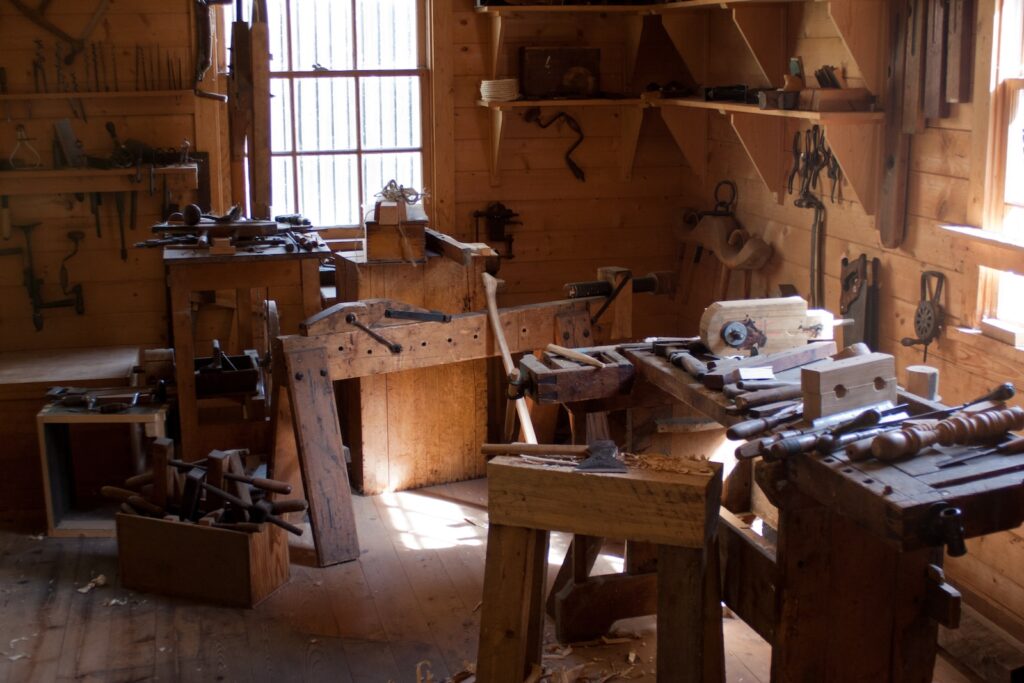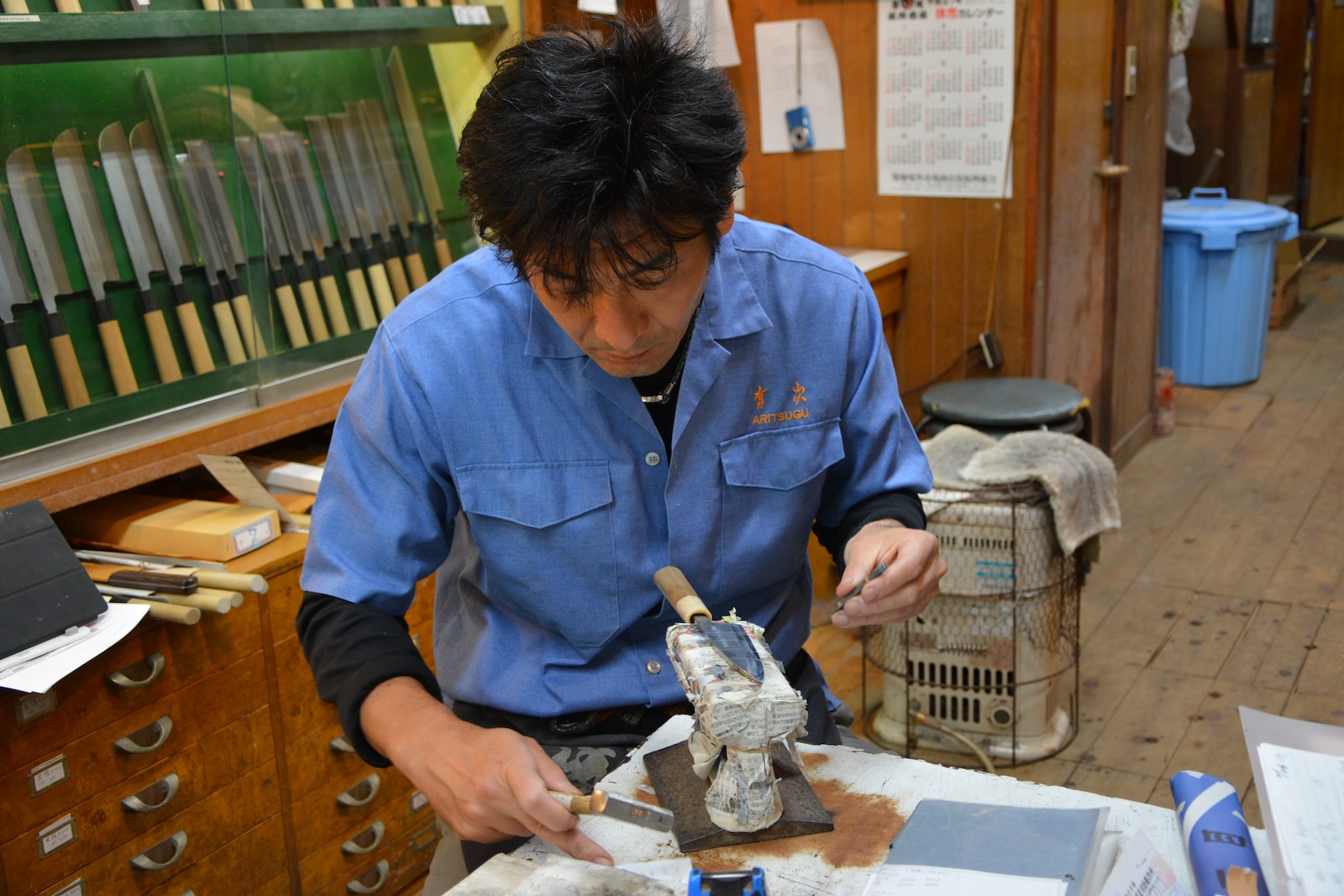As a woodworker, I know it’s essential to maintain my tools correctly.
When woodturning, keeping your tools sharp is vital for achieving the best results.
In this section, I will advise how often to sharpen wood-turning tools and tips for maximizing their effectiveness through proper maintenance.
Table of Contents
Key Takeaways:
- Regular sharpening of your wood-turning tools is essential for maintaining their performance and longevity.
- Proper maintenance is key to maximizing the effectiveness of sharpened tools.
- Understanding the different types of wood-turning tools and their specific sharpening requirements is crucial.
- The right tools and supplies are necessary for achieving consistent and effective results when sharpening wood-turning tools.
- Following a step-by-step guide can help you sharpen your wood-turning tools effectively.
Understanding Wood Turning Tools

Before we jump into the techniques of sharpening wood-turning tools, it’s essential to understand the different types of tools available.
Each tool has a specific application and sharpening requirement, so it’s crucial to identify the tool correctly before honing the edge.
The Common Wood Turning Tools
The most popular woodturning tools comprise spindle gouges, bowl gouges, skews, parting tools, and scrapers.
Spindle gouges shape spindle work primarily, whereas bowl gouges operate on faceplates.
Skews cut flat regions and form V-cuts, while the parting tools are excellent for separating the spindle and building tenons.
Scrapers are incredibly flexible, as they can be used for spindle and faceplate operations.
Each tool requires specific sharpening techniques, angles, and tool rests to function ideally.
Sharpening Techniques
There are a few ways to sharpen wood-turning tools.
The most used ones are grinding, sharpening with stones, or using a honing guide.
A bench grinder is fast but challenging to control grinding angles.
Stones are more precise, but they require expertise.
On the other hand, a honing guide may help you maintain consistent angles.
The sharpening angles and techniques you use depend on the intended application and the kind of tool.
When selecting the appropriate bevel angle, it’s important to keep in mind that it often falls between 20 and 45 degrees.
The sharper a bevel angle is, the quicker it will dull.
Consequently, a shallower angle guarantees longevity but won’t be as sharp.
Sharpening Frequencies
How often you sharpen your wood-turning tools depends on your usage and personal preference.
Some woodworkers might sharpen their tools after every project, while others may only hone them once every few months.
It’s crucial to inspect your tools regularly to ensure they’re sharp enough to perform at their best.
Pro Tip: If you notice that your tool is starting to dull, stop using it immediately. Continuing to use a dull tool will only cause frustration and impede progress.For great woodworking results, it is important to understand wood-turning tools and how to sharpen them.
Identifying each tool and using the appropriate sharpening techniques will extend their lifespan and improve your projects.
Importance of Regular Sharpening

If you enjoy woodturning, you likely recognize the significance of sharpening to optimize your tool’s output and lifespan.
However, how important is it, and how often should you do it?
The best way to sharpen wood-turning tools depends on the usage frequency, the type of tools used, and other factors.
Generally, it is recommended to sharpen your tools every few hours of use or whenever you notice a decrease in performance or dullness.
Regular sharpening ensures that your tools stay sharp, efficient, and safe.
Dull tools can cause rough cuts, inaccurate shaping, and potentially injure the operator.
To avoid these scenarios, regular maintenance, including sharpening and proper care, should be a part of your routine.
Plus, a sharp tool reduces the likelihood of rough edges on your project, preventing damage and ensuring a polished, professional finish.
Sharpening your tool correctly improves precision and management, making it easier for you to craft intricate patterns and designs.
Sharpening your wood-turning tools can extend their lifespan and prevent the need for frequent replacements due to reduced wear and tear.
This ultimately translates into long-term savings while delivering exceptional results with well-maintained and sharpened tools.
Tools and Supplies for Sharpening
Properly sharpening wood-turning tools necessitates having appropriate tools and supplies to achieve consistent and effective outcomes.
Here is the necessary equipment you need:
| Equipment | Description |
|---|---|
| Grinding wheel | A high-quality grinding wheel is a critical tool for sharpening wood-turning tools. Look for a wheel with a grit range of 180-320 for rough grinding and 400-600 for finishing. |
| Honing guide | A honing guide helps maintain consistent angles while sharpening. Look for a guide with adjustable angle settings to accommodate different tool types. |
| Sharpening stones | Sharpening stones come in various materials such as diamond, ceramic, and natural stones. To hone your woodturning tools, select a stone with a grit range of 1000-6000. |
To enhance your sharpening process, you can use additional supplies such as a leather strop to hone and polish, a dressing stone to maintain your grinding wheel shape, and a magnifying glass or loupe to inspect your edges.
To get the best results when sharpening your woodturning tools, use a specialized sharpening system or a slow-speed grinder.
These systems often come with adjustable angles and jigs for precise sharpening.
Remember to follow the manufacturer’s instructions when using the system and invest
in quality tools and supplies.
Step-by-Step Wood Turning Tool Sharpening
Properly sharpening your woodturning tools is essential for achieving the best results in your woodworking projects.
Here is a step-by-step guide to help you sharpen your tools effectively:
- Inspecting the tool: Start by inspecting your wood-turning tool. Check for any nicks, cracks, or other damage affecting the sharpening process. It is essential to repair or replace any damaged parts before proceeding with the sharpening.
- Securing the tool: Secure the tool in a vice or clamp to keep it steady during the sharpening process. Ensure that the tool is locked in securely and won’t move around as you work on it.
- Grinding: Use a grinding wheel to grind the bevel of the tool. It is essential to maintain the correct angle while grinding. Generally, this angle is between 20 and 45 degrees, depending on the tool. Use a honing guide to maintain the angle and avoid creating an uneven grind.
- Honing: Once you have established the correct bevel angle, it is time to hone the tool’s edge. Use a sharpening stone or diamond plate to hone the bevel, moving the tool backward in a sweeping motion. Repeat this process until the edge is sharp.
- Removing burrs: After honing the edge, it is essential to remove any burrs that may have formed. Use a leather strop or honing compound to remove any burrs, moving the tool back and forth in the opposite direction of the honing process.
- Testing: Before using the tool, it is crucial to test it to ensure that it is properly sharpened. Test the tool’s sharpness by making light cuts on a scrap piece of wood. If the tool cuts through the wood smoothly without causing any torn fibers, it is sharp and ready to use.
This will ensure that your tools are sharp and ready for use when needed.
Remember to take time and adhere to the correct techniques to achieve excellent results.
Maintenance Tips for Prolonged Sharpness
Sharpening your wood-turning tools is only half the battle; proper maintenance is necessary to keep them sharp for an extended period.
Here are some maintenance tips that can help you improve the longevity and effectiveness of your wood-turning tools.
Storing Your Wood-Turning Tools
One way to maintain the sharpness of your wood-turning tools is by proper storage.
After use, clean the tools using a soft cloth and store them in a dry and safe place that’s easily accessible.
Avoid places with high humidity, as this can cause rusting and damage the tools.
Cleaning Your Wood-Turning Tools
It’s important to regularly clean your wood-turning tools in order to maintain their sharpness.
Use a soft brush to remove any dust or debris after each use.
For stubborn stains or debris, mineral spirits can be used. Make sure to dry the tools thoroughly before storing them.
Protecting Your Wood-Turning Tools
Protecting your wood-turning tools is important for keeping them sharp.
Avoid contact with other tools that could cause scratches, dents, or other damage.
To transport your tools safely, consider using tool rolls or protective cases.
Checking for Damage
Check your wood-turning tools often for any chips or cracks. If you see any damage, fix it right away to avoid more problems.
Using Your Wood Turning Tools Properly
Using your wood-turning tools properly can help keep them sharp.
Be sure to use the right tool for each job, and don’t use too much force when turning.
Applying too much pressure can cause the tool to wear down too soon, making it dull.
To keep your tools sharp and effective for a long time, follow these maintenance tips.
Proper maintenance is important to keep your tools in good condition and to get the best performance from them.
Conclusion
The bottom line, any serious woodturner needs to keep his woodturning tools sharpened and maintained on a regular basis.
A sharp tool not only ensures accurate and precise work but also prolongs the lifespan of their tools.
Throughout this article, we talked about sharpening wood-turning tools.
We covered topics such as how often you should sharpen them, the various types of tools and their specific needs, the advantages of regular sharpening, the tools and supplies required, step-by-step techniques for sharpening your tools, and maintenance tips to keep them sharp.
Check them often and sharpen them as needed, store them correctly, and avoid damage.
When you use the skills and tricks covered, your woodworking will be better.
To keep your wood-turning tools working well for a long time, follow these tips.
Sharp tools are key to success.
Thanks for reading!

